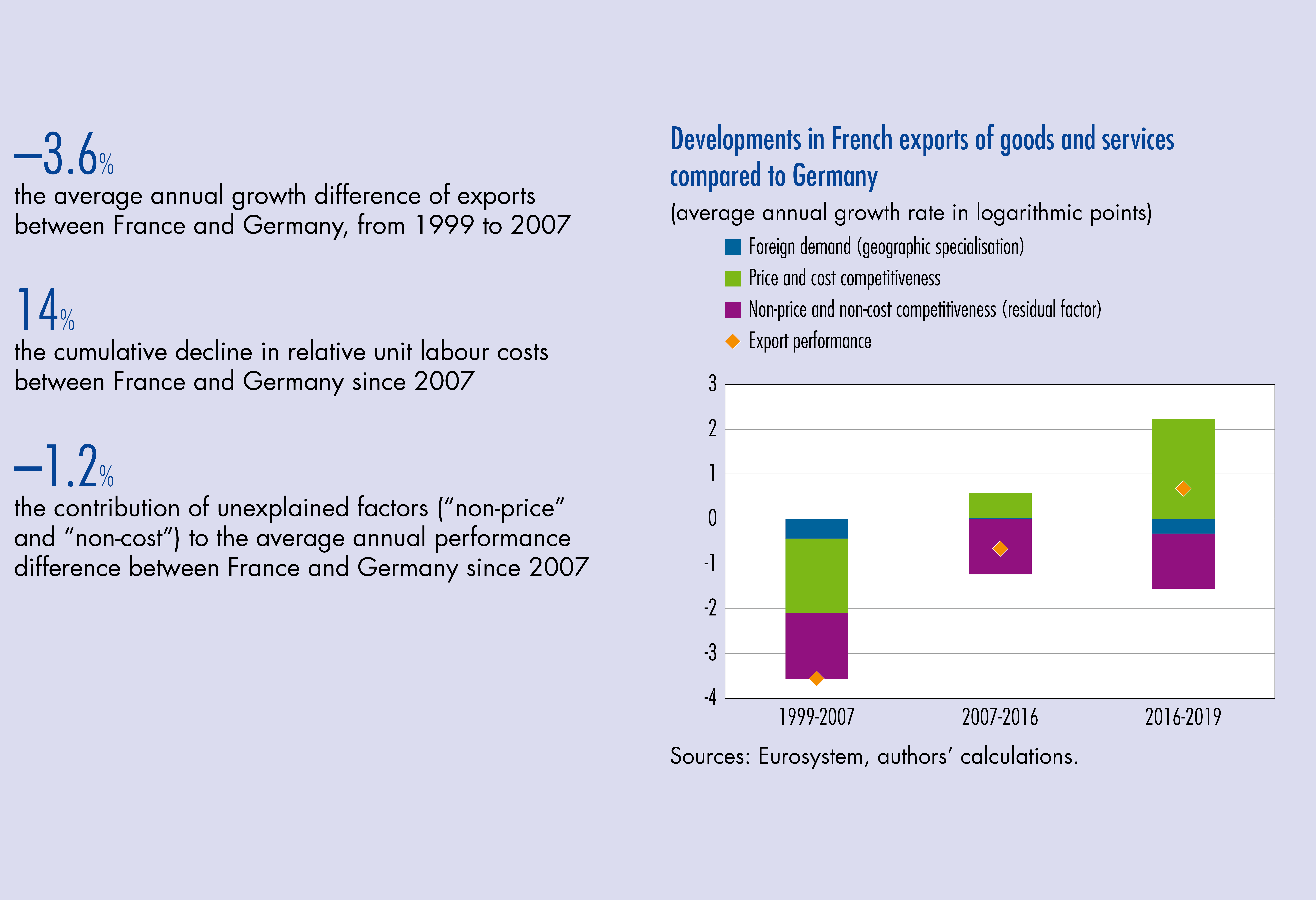
Banque de France Bulletin no. 235: Article 6 How have French exports fared as regards price and cost competitiveness since the start of the 2000s?
After a first decade marked by deterioration in its cost competitiveness relative to Germany in particular, France has fully made up the difference in this loss of competitiveness since 2010. Meanwhile, France’s goods and services export performance stabilised prior to the 2020 pandemic. We used an econometric study to quantify the contribution of price and cost factors as well as other non-price and non-cost factors to changes in France’s export competitiveness compared to Germany, Italy and Spain during this period. Cost competitiveness differences had an unfavourable impact before the great financial crisis. Since 2010, the restored price and cost competitiveness made it possible to make up only a small share of the lost ground relative to other large euro area countries given on-going deterioration in other export performance factors (non-cost competitiveness).
1 France’s market share of exports has stabilised in the past decade
After a marked deterioration between the start of the 2000s and the great financial crisis of 2008-10, France’s market share for exports of goods and services has stabilised since 2010 (see Chart 1). Indeed, the macroeconomic “performance” of French exports, measured by the ratio of exports (in value or volume) relative to foreign demand, stabilised at the end of the financial crisis. This trend break also occurred in Italy and Spain, which experienced significant nominal adjustments at the height of the sovereign debt crisis.
In 2019, just before the pandemic, France was in the process of recovering export market share, whereas Germany’s export performance decreasing due in part to temporary difficulties in the automotive sector.
The Covid 19 crisis had a major impact on French exports in 2020. The deterioration in export performance was mainly due to unfavourable specialisation, with the significant share of the aeronautical sector (see Berthou and Gaulier, 2021). Similarly, travel restrictions significantly weakened French exports of services. In Spain, the highly unfavourable export performance in 2020 also resulted from the collapse in demand for travel, which is not reflected in the foreign demand indicator.
The year 2020 was atypical in terms of the role of sectoral specialisation, since global demand in the aeronautics sector generally used to favour French exports. Overall, France’s specialisation proved to be an asset as of the mid-2000s, even relative to Germany (see Gaulier et al., 2013 – Table 3, updated in Bas et al., 2015). The growth of travel in international trade also benefited France, albeit to a lesser extent given the significant regional specialisation in this sector (less dynamic European markets – see Camatte and Gaulier, 2018). Lastly, services excluding travel were a growth driver for France’s foreign trade between 2000 and 2019 (see Bui Quang and Gigout, 2021).
2 France’s cost competitiveness has improved since 2008
France has significantly improved its cost competitiveness relative to Germany following a lengthy period of deterioration (see Chart 2 and Box 1). Since 2008, the cumulative decline in France/Germany relative unit labour costs (ULCs) was approximately 14%. Just before the pandemic, France had therefore completely recovered its loss of cost competitiveness relative to Germany observed since the early 2000s. Nevertheless, between 2008 and 2017 France saw its cost competitiveness decline relative to Spain, which experienced a significant drop in its wage costs during the…
Download the PDF version of this document

- Published on 08/09/2021
- 9 pages
- EN
- PDF (405.94 KB)
Bulletin Banque de France 235
Updated on: 08/09/2021 12:38
